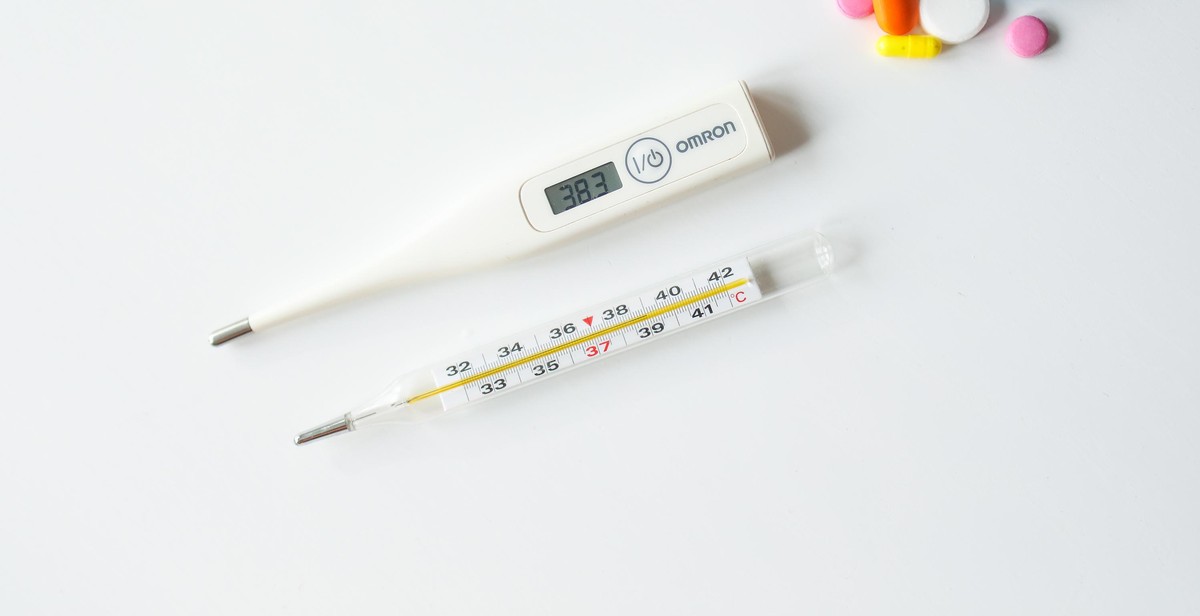How to Forecast Temperature: Methods and Tools for Predicting Temperature Changes
Temperature forecasting is a critical aspect of weather prediction and climate change research. It involves predicting the temperature changes that will occur in a particular place at a given time. Forecasting temperature is important because it helps individuals and organizations make informed decisions about their daily activities or long-term plans.
Why Forecasting Temperature is Important
Temperature affects almost every aspect of our lives, from what we wear to the food we eat. Accurate temperature forecasting is essential for:
- Planning outdoor activities such as sports events, weddings, and festivals
- Managing energy consumption, especially during extreme weather conditions
- Preparing for natural disasters such as hurricanes, floods, and droughts
- Protecting public health and safety during heatwaves and cold spells
- Supporting agriculture and farming by predicting frost and heat stress
There are several methods and tools that scientists and meteorologists use to forecast temperature changes. These tools range from simple thermometers and weather balloons to advanced computer models and satellite imagery. Understanding how to use these tools can help individuals and organizations make informed decisions based on accurate temperature predictions.
Factors Affecting Temperature
Temperature is an essential component of weather forecasting. Several factors determine the temperature of a particular area. Understanding these factors is vital in predicting temperature changes accurately.
Understanding the Basics of Temperature
Temperature is the measure of the amount of heat or coldness of an object or substance. It is measured in degrees Celsius (°C) or Fahrenheit (°F). Temperature reflects the intensity of heat energy in an object.
Global Climate Patterns
The earth has different climate zones that are determined by the amount of sunlight received. The equator receives more direct sunlight than the poles, and this results in higher temperatures in the equator region. The climate zones are also affected by the rotation of the earth, ocean currents, and wind patterns.
Solar Radiation
Solar radiation is the primary source of heat energy on earth. The sun emits solar radiation, which heats the earth’s surface. The amount of solar radiation received on earth varies depending on the angle of incidence, time of day, and season.
Ocean Currents
Ocean currents are responsible for distributing heat around the globe. Warm ocean currents carry warm water from the equator towards the poles, while cold ocean currents carry cold water from the poles towards the equator. The direction and strength of ocean currents are determined by wind patterns and the shape of the ocean floor.
| Factors | Description |
|---|---|
| Understanding the Basics of Temperature | Measure of the amount of heat or coldness of an object or substance |
| Global Climate Patterns | Climate zones determined by the amount of sunlight received, rotation of the earth, ocean currents, and wind patterns |
| Solar Radiation | Primary source of heat energy on earth |
| Ocean Currents | Responsible for distributing heat around the globe |
Methods of Temperature Forecasting
There are several methods used to forecast temperature changes. Some of the most common methods include Numerical Weather Prediction, Statistical Methods, and Analog Forecasting.
Numerical Weather Prediction
Numerical Weather Prediction (NWP) is a computer-based method used to predict weather conditions, including temperature changes. This method involves using mathematical models to simulate the behavior of the atmosphere. These models use data from weather observations, such as temperature, pressure, and wind speed, to make predictions about future weather conditions.
NWP is a highly sophisticated method that requires advanced mathematical and computational skills. It is used by meteorologists to make detailed weather forecasts for specific locations and times.
Statistical Methods
Statistical methods are another common approach to temperature forecasting. These methods involve analyzing historical weather data to identify patterns and trends. Meteorologists use statistical models to make predictions about future weather conditions based on these patterns and trends.
One example of a statistical method used in temperature forecasting is regression analysis. This method involves analyzing the relationship between temperature and other variables, such as time of day or season, to make predictions about future temperature changes.
Analog Forecasting
Analog forecasting is a method that involves finding historical weather events that are similar to the current weather conditions and using them to make predictions about future weather conditions. This method is based on the assumption that weather patterns tend to repeat themselves over time.
Meteorologists use analog forecasting to make predictions about temperature changes by identifying historical weather events that had similar temperature patterns to the current weather conditions. They then use these events to make predictions about future temperature changes.
Conclusion
Overall, there are several methods used to forecast temperature changes, including Numerical Weather Prediction, Statistical Methods, and Analog Forecasting. Each method has its strengths and weaknesses, and meteorologists often use a combination of methods to make accurate temperature predictions.

Tools for Temperature Forecasting
There are several tools and methods used for predicting temperature changes. Here are some of the most commonly used:
Thermometers
Thermometers are the most basic and traditional tool used for measuring temperature. They are used to measure the temperature of the air, water, and other substances. Thermometers are still widely used today, especially in homes and offices.
Radiosondes
Radiosondes are weather balloons that are equipped with instruments to measure temperature, humidity, pressure, and wind speed. The data collected by radiosondes is transmitted back to the ground station, where it is used to create weather forecasts. Radiosondes are particularly useful for measuring temperature changes in the upper atmosphere.
Satellites
Satellites are used to collect data on temperature changes from space. They are equipped with infrared sensors that can detect temperature changes in the atmosphere and on the Earth’s surface. The data collected by satellites is used to create global temperature maps and to track weather patterns.
Weather Models
Weather models are computer programs that use mathematical algorithms to simulate weather patterns. They take into account data from thermometers, radiosondes, and satellites to create a detailed forecast of temperature changes. Weather models are constantly being updated and improved to provide more accurate forecasts.
Conclusion
Using a combination of these tools and methods can help meteorologists and weather forecasters create accurate predictions of temperature changes. As technology advances, these tools will continue to improve, providing even more accurate forecasts in the future.

Challenges in Temperature Forecasting
Temperature forecasting is a complex process that involves several challenges. Here are some of the major challenges that forecasters face:
Data Accuracy
The accuracy of temperature forecasting largely depends on the quality of data used. Accurate temperature forecasting requires reliable and up-to-date data on temperature, humidity, wind speed, and other weather parameters. However, collecting and analyzing such data is not always easy due to various factors such as equipment malfunctions, data gaps, and data errors. Therefore, forecasters must ensure that they have access to accurate and reliable data to improve the accuracy of their temperature forecasts.
Model Limitations
Temperature forecasting models are designed to predict future temperature changes based on past data and other weather parameters. However, these models have limitations, and they cannot accurately predict sudden and extreme weather changes. Moreover, the accuracy of these models decreases as the forecasting period increases. Therefore, forecasters must use multiple models and techniques to improve the accuracy of their temperature forecasts.
Uncertainty
Temperature forecasting is inherently uncertain, and there is always a degree of uncertainty associated with temperature forecasts. This uncertainty arises due to various factors such as incomplete data, model limitations, and unpredictable weather changes. Therefore, forecasters must communicate the level of uncertainty associated with their temperature forecasts to help users make informed decisions.
| Challenge | Description |
|---|---|
| Data Accuracy | Accurate temperature forecasting requires reliable and up-to-date data on temperature, humidity, wind speed, and other weather parameters. |
| Model Limitations | Temperature forecasting models have limitations, and they cannot accurately predict sudden and extreme weather changes. |
| Uncertainty | Temperature forecasting is inherently uncertain, and there is always a degree of uncertainty associated with temperature forecasts. |
Despite these challenges, temperature forecasting remains an important tool for various industries such as agriculture, transportation, and energy. By understanding the challenges involved in temperature forecasting, forecasters can improve the accuracy of their forecasts and help users make informed decisions.

Conclusion
Forecasting temperature changes is an important task for various industries and individuals. It helps us to plan our activities, prevent disasters, and take necessary precautions to keep ourselves safe. In this article, we have discussed different methods and tools for predicting temperature changes.
Key Takeaways
- There are various methods for forecasting temperature changes, including statistical models, numerical weather prediction, and machine learning algorithms.
- Weather stations, satellites, and other remote sensing technologies provide essential data for temperature forecasting.
- Accuracy in temperature forecasting depends on the availability and quality of data, as well as the complexity of the forecasting model.
- Weather forecasting models are continually improving, thanks to advancements in technology and data collection.
Final Thoughts
As climate change continues to affect the world, temperature forecasting becomes even more critical. By understanding the different methods and tools available, we can better prepare for the changes ahead. Whether you are a farmer, a business owner, or an individual planning a trip, temperature forecasting can help you make informed decisions and stay safe.
| Method/Tool | Advantages | Disadvantages |
| Statistical models | Easy to use, require less computational power | Less accurate than other methods |
| Numerical weather prediction | Highly accurate, can predict weather changes up to several days in advance | Require extensive computational power and data processing |
| Machine learning algorithms | Can learn from past data and improve accuracy over time | Require large amounts of data for training |
